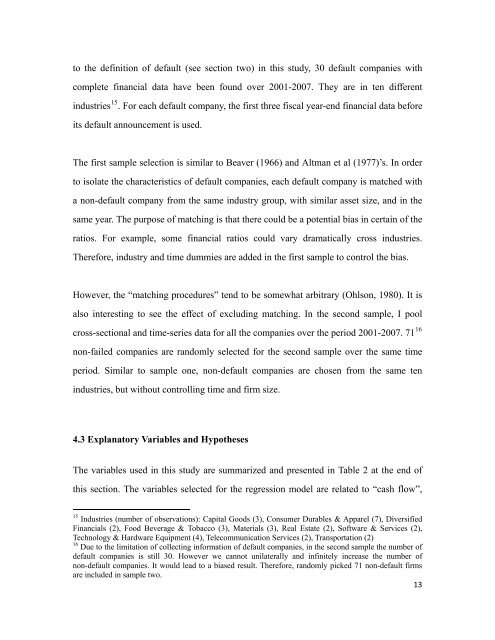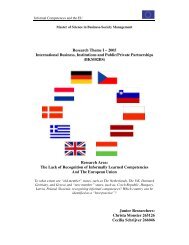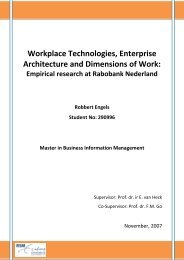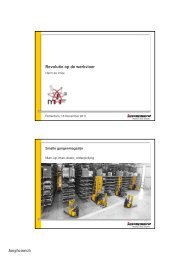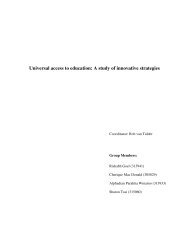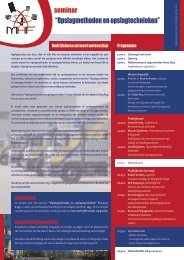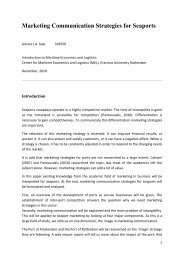Financial Ratios as Predictors of Failure: Evidence from ... - ERIM
Financial Ratios as Predictors of Failure: Evidence from ... - ERIM
Financial Ratios as Predictors of Failure: Evidence from ... - ERIM
Create successful ePaper yourself
Turn your PDF publications into a flip-book with our unique Google optimized e-Paper software.
to the definition <strong>of</strong> default (see section two) in this study, 30 default companies with<br />
complete financial data have been found over 2001-2007. They are in ten different<br />
industries 15 . For each default company, the first three fiscal year-end financial data before<br />
its default announcement is used.<br />
The first sample selection is similar to Beaver (1966) and Altman et al (1977)’s. In order<br />
to isolate the characteristics <strong>of</strong> default companies, each default company is matched with<br />
a non-default company <strong>from</strong> the same industry group, with similar <strong>as</strong>set size, and in the<br />
same year. The purpose <strong>of</strong> matching is that there could be a potential bi<strong>as</strong> in certain <strong>of</strong> the<br />
ratios. For example, some financial ratios could vary dramatically cross industries.<br />
Therefore, industry and time dummies are added in the first sample to control the bi<strong>as</strong>.<br />
However, the “matching procedures” tend to be somewhat arbitrary (Ohlson, 1980). It is<br />
also interesting to see the effect <strong>of</strong> excluding matching. In the second sample, I pool<br />
cross-sectional and time-series data for all the companies over the period 2001-2007. 71 16<br />
non-failed companies are randomly selected for the second sample over the same time<br />
period. Similar to sample one, non-default companies are chosen <strong>from</strong> the same ten<br />
industries, but without controlling time and firm size.<br />
4.3 Explanatory Variables and Hypotheses<br />
The variables used in this study are summarized and presented in Table 2 at the end <strong>of</strong><br />
this section. The variables selected for the regression model are related to “c<strong>as</strong>h flow”,<br />
15<br />
Industries (number <strong>of</strong> observations): Capital Goods (3), Consumer Durables & Apparel (7), Diversified<br />
<strong>Financial</strong>s (2), Food Beverage & Tobacco (3), Materials (3), Real Estate (2), S<strong>of</strong>tware & Services (2),<br />
Technology & Hardware Equipment (4), Telecommunication Services (2), Transportation (2)<br />
16<br />
Due to the limitation <strong>of</strong> collecting information <strong>of</strong> default companies, in the second sample the number <strong>of</strong><br />
default companies is still 30. However we cannot unilaterally and infinitely incre<strong>as</strong>e the number <strong>of</strong><br />
non-default companies. It would lead to a bi<strong>as</strong>ed result. Therefore, randomly picked 71 non-default firms<br />
are included in sample two.<br />
13


